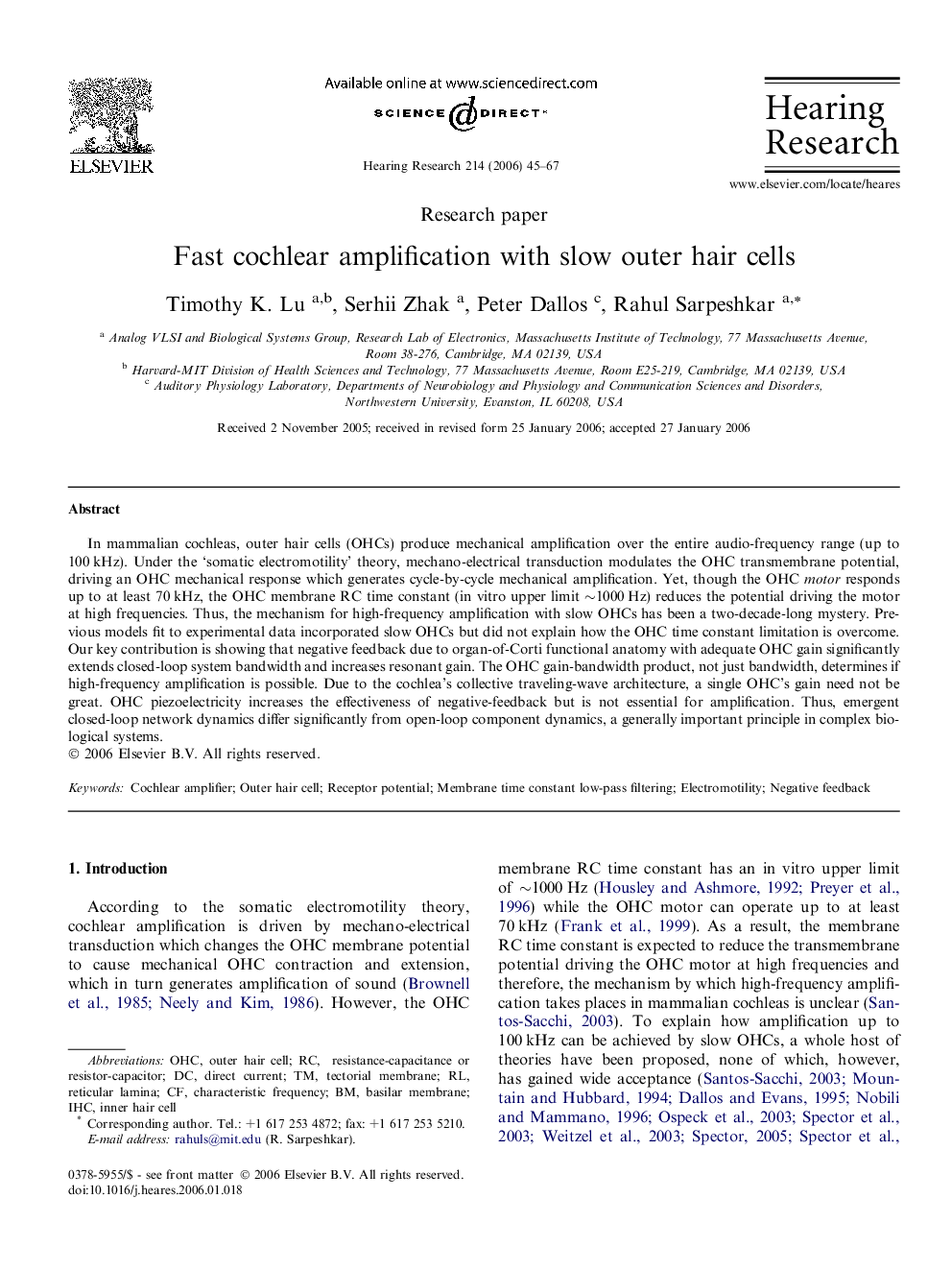| کد مقاله | کد نشریه | سال انتشار | مقاله انگلیسی | نسخه تمام متن |
|---|---|---|---|---|
| 4356414 | 1615684 | 2006 | 23 صفحه PDF | دانلود رایگان |
عنوان انگلیسی مقاله ISI
Fast cochlear amplification with slow outer hair cells
دانلود مقاله + سفارش ترجمه
دانلود مقاله ISI انگلیسی
رایگان برای ایرانیان
کلمات کلیدی
OHCElectromotility - الکترو مغلوبIHC - ایمونوهیستوشیمیnegative feedback - بازخورد منفیCochlear amplifier - تقویت کننده CochlearDC, Direct current - جریان مستقیم، جریان پیوستهouter hair cell - سلول بیرونی موInner hair cell - سلول داخلی داخلیbasilar membrane - غشاء basilarTectorial membrane - غشای خلقیCharacteristic Frequency - فرکانس مشخصهreticular lamina - ورقه ورقه ایReceptor potential - پتانسیل گیرنده
موضوعات مرتبط
علوم زیستی و بیوفناوری
علم عصب شناسی
سیستم های حسی
پیش نمایش صفحه اول مقاله

چکیده انگلیسی
In mammalian cochleas, outer hair cells (OHCs) produce mechanical amplification over the entire audio-frequency range (up to 100Â kHz). Under the 'somatic electromotility' theory, mechano-electrical transduction modulates the OHC transmembrane potential, driving an OHC mechanical response which generates cycle-by-cycle mechanical amplification. Yet, though the OHC motor responds up to at least 70Â kHz, the OHC membrane RC time constant (in vitro upper limit â¼1000Â Hz) reduces the potential driving the motor at high frequencies. Thus, the mechanism for high-frequency amplification with slow OHCs has been a two-decade-long mystery. Previous models fit to experimental data incorporated slow OHCs but did not explain how the OHC time constant limitation is overcome. Our key contribution is showing that negative feedback due to organ-of-Corti functional anatomy with adequate OHC gain significantly extends closed-loop system bandwidth and increases resonant gain. The OHC gain-bandwidth product, not just bandwidth, determines if high-frequency amplification is possible. Due to the cochlea's collective traveling-wave architecture, a single OHC's gain need not be great. OHC piezoelectricity increases the effectiveness of negative-feedback but is not essential for amplification. Thus, emergent closed-loop network dynamics differ significantly from open-loop component dynamics, a generally important principle in complex biological systems.
ناشر
Database: Elsevier - ScienceDirect (ساینس دایرکت)
Journal: Hearing Research - Volume 214, Issues 1â2, April 2006, Pages 45-67
Journal: Hearing Research - Volume 214, Issues 1â2, April 2006, Pages 45-67
نویسندگان
Timothy K. Lu, Serhii Zhak, Peter Dallos, Rahul Sarpeshkar,